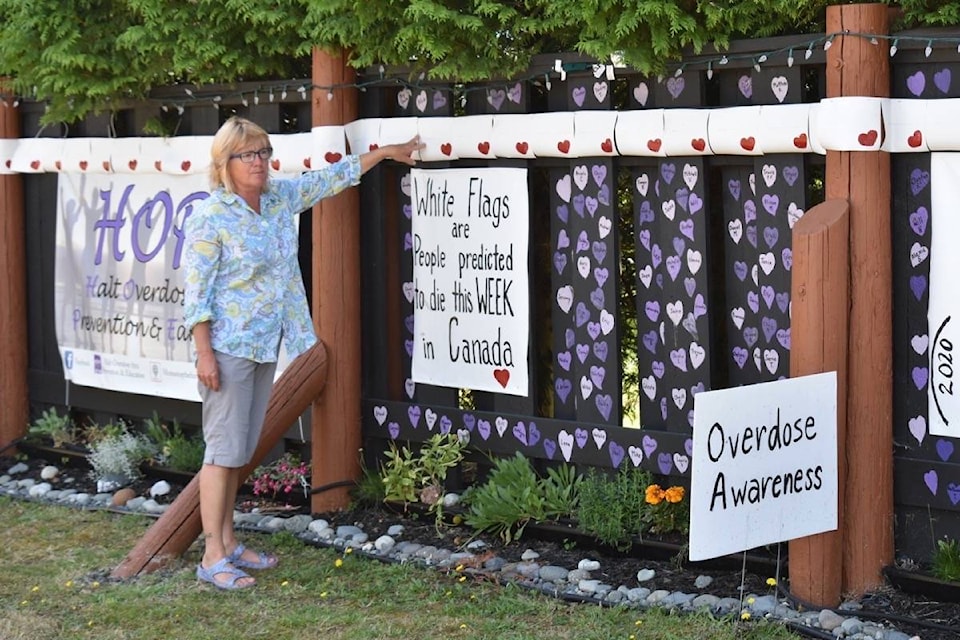In 2016, a public health emergency due to a drug overdose crisis was declared in B.C.
In 2019, health officials were beginning to see a decrease in the number drug toxicity deaths; however, the “isolation and other negative impacts from COVID-19 have erased all of those gains,” said Charmaine Enns, Medical Health Officer for North Vancouver Island.
In May and June of this year, there were 171 and 175 suspected drug toxicity deaths, respectively, based on the most recent report from the BC Coroners Service. June’s total was the highest number of illicit drug toxicity deaths ever recorded in a month in B.C.
“If the reported deaths continue at the same rate as the past few months, we will exceed the worst reported year of 2018,” Enns said. “This public health emergency is far from over.”
In the Comox Valley, a Community Action Team (CAT) will be hosting activities Monday, Aug. 31 at the Comox Valley Art Gallery plaza to highlight International Overdose Awareness Day.
There are several members of CAT who have personal stories related to substance use. Comox resident Judith Conway lost her son Matthew to a fentanyl overdose in 2017. He was 30 years old. Conway also lost her nephew, Christopher Reynolds, who died in 2016 from an overdose at 32.
In an effort to memorialize those who died from drug overdose, Conway created a display on her back fence that faces Guthrie Road. She hung a string with bits of yarn tied to the fence, each piece representing a lost life. It was topped with a row of colorful flags, each bearing a name, largely representing victims from the Comox Valley.
Last year, she packed up the display and took it to the Vatican, where it was blessed by Pope Francis.
READ: Comox overdose awareness display blessed by the Pope
The flags have since changed to hearts. The display also contains photos of people — mostly young people — who died from an overdose.
Also displayed is a banner of an organization that Conway initiated called Halt Overdose thru Prevention & Education (HOPE).
“There’s a lot of people working on safe supply, decriminalization, and there seems to be some headway towards that,” Conway said. “I believe that we also need to start on prevention, long before drugs even come into the picture.”
She feels the topic needs to become part of the school curriculum, twice a week, led by trained individuals, not teachers.
“These are hard skills to work on. We must start at kindergarten, and start talking about inter- and intra-personal skills — learn how to recognize problems, and be able to communicate it. Because there’s so much shame and stigma behind mental illness, we need to normalize the conversation around mental illness, or just mental difficulties…We can do everything we want right now, but if we’re not starting with prevention, this problem will continue for years to come. Many of the people who die, die alone in their homes.”
Conway has spoken with other mothers who have lost a child to overdose.
“We had recognized potential problems even when they were young, long before drugs entered the picture. Matthew was alone in his pain, and so were a lot of people. It was really, really difficult.”
K’omoks First Nation Elder Barb Whyte will conduct a cedar brushing and a releasing-of-the-souls ceremony of the names and pictures on Conway’s fence on Thursday, Aug. 27.
Monday from 11 a.m.-3 p.m. at the CVAG plaza, there will be speakers, performers and a memorial to honour loved ones. Social distancing guidelines will be followed. Visitors are encouraged to wear masks.
